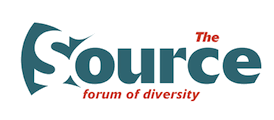
Canadian representatives and participants, exhibition and symposium | Photo courtesy of Global Alliance Against FGM 2014
Female genitalia mutilation (FGM) rituals wound not just the young girl they are performed on, but also can tear at a nation’s basic social foundation.
International Women’s Day is March 8, and reminds people about the struggles in seeking justice for both women and girls. But this year, a ground-breaking UN art show revealed the negative effects of passivity on violence against females around the globe.
The Global Alliance against Female Genital Mutilation – #GAFGM on Twitter – organized the event at Le Palais des Nations, in Geneva.
In commemoration of the International Zero Tolerance Day of Female Genital Mutilation (held Feb. 6, 2014), GAFGM’s exhibit Une Femme Blessée est une Nation Blessée – A Wounded Woman is a Wounded Nation united, for the first time, Canadian First Nations artists to join in solidarity with European and African artists to express on the theme of female genital mutilation.
Taking place in the “Passerelle,” a natural, beautifully-lit corridor linking the new and old UN buildings, the presentation – a first in any exhibit at the UN – juxtaposes images of First Nations and African societies and gives voice to the suffering and oppression of both women and girls as victims of FGM.
The exhibition was unveiled in the presence of Michael Moller, the director general interim of the Office of the United Nations, and UN representatives from Togo and Senegal and also had endorsement from the permanent mission of Canada. The audience was composed of diplomats, staff, students and visitors representing various locales from around the world. From Canada, exhibitors included three generations from the Cree Nation of Manitoba: carver and jewellery maker Jadeon Rathgeber and his mother, Patsy Half Moon Bruderer, accompanied by her granddaughter.
Half Moon, the only woman artist-participant, demonstrated a rare First Nations’ art form called “Birch Bark Biting” or “Birch Bark Transparencies,” an ancient indigenous art technique requiring the use of teeth.
Half Moon is one of the last Native practitioners of this art form.
Also supporting the Global Alliance, were Quebec artists including First Nation sculptor and print maker Jacques Newashish (Atikamekw) and Quebecois painters Patrick Gignac and Igor Ustinov.
In response to the historic UN Resolution adopted Dec. 20, 2012 banning worldwide FGM, the GAFGM also organized a symposium Feb. 7, 2014 at the Conference Centre in Geneva. With the participation of multiple countries officially represented and in the presence of Dr. Michel Sidibé, Executive Director of UNAIDS (ONUSIDA), this international symposium created the infrastructure for the first university chair specializing in the subject of FGM. In its goal to put into place FGM-abandonment programs, it will link together research, activism and available information, drawing from an interdisciplinary group to see and determine what programs conform or do not conform with the UN resolution ban, with special emphasis on evaluation criteria of projects on the ground working to see the abandonment of the practice of FGM.
GAFGM was co-founded in 2010, on the United Nations campus, by Canadian Elisabeth Wilson, along with her partner, German-born Holger Postulart.



